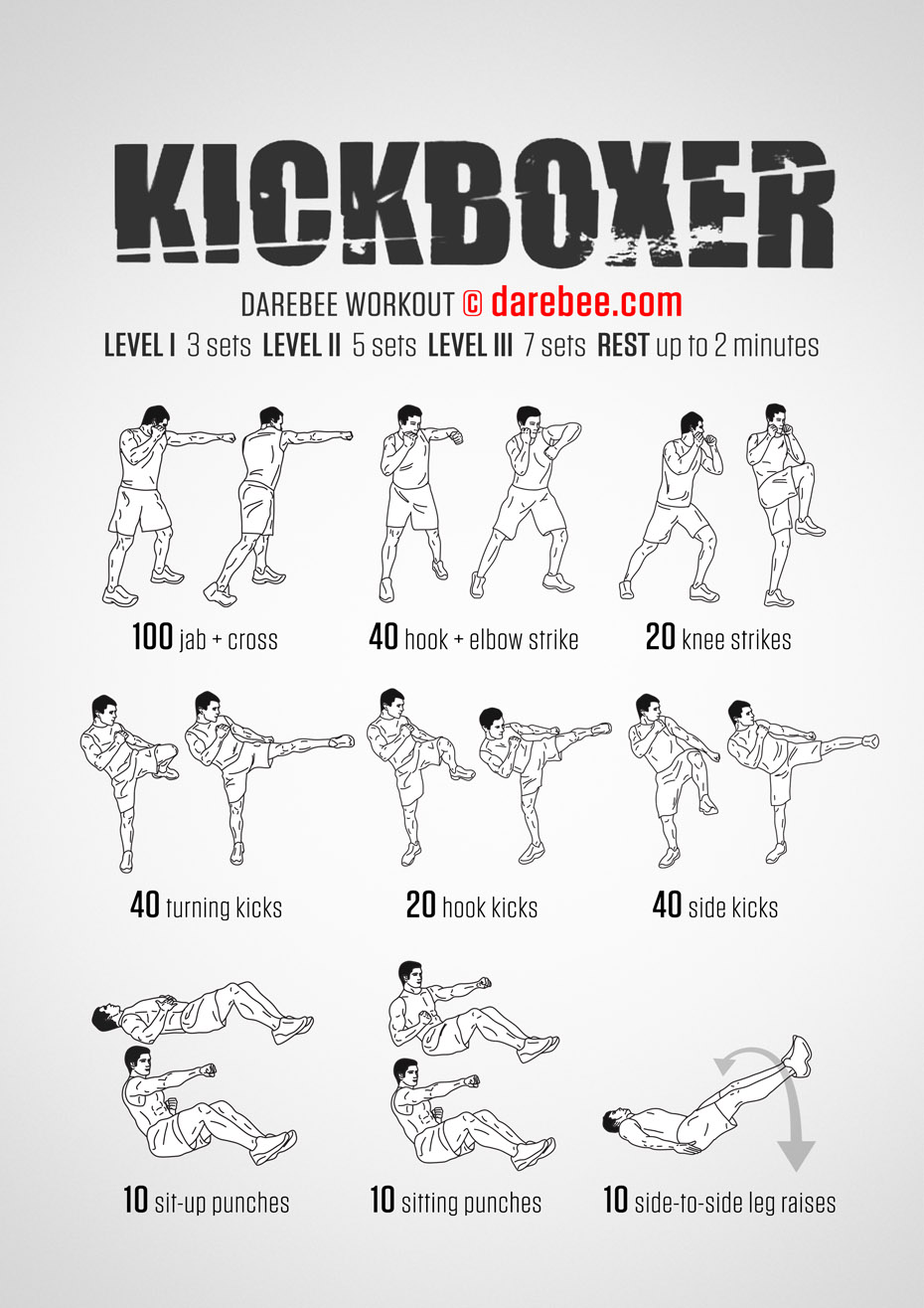
Tentu, ini artikel berbahasa Inggris tentang rutinitas latihan kickboxing untuk kebugaran, dengan panjang sekitar 1.200 kata.
Unleash Your Inner Fighter: A Comprehensive Guide to Kickboxing Training Routines for Peak Fitness
Tired of the monotonous treadmill or the repetitive weight rack? Seeking a workout that not only sculpts your physique but also sharpens your mind and empowers your spirit? Look no further than kickboxing. More than just a combat sport, kickboxing has exploded in popularity as a dynamic, full-body fitness regimen that promises an exhilarating blend of cardiovascular conditioning, strength building, flexibility, and stress relief.
This article will delve deep into the world of kickboxing training routines for fitness, providing a comprehensive guide for individuals looking to integrate this powerful discipline into their wellness journey. From understanding its unparalleled benefits to structuring effective weekly routines and mastering fundamental techniques, prepare to unleash your inner fighter and redefine your fitness goals.
The Unparalleled Benefits of Kickboxing for Fitness
Before diving into the routines, let’s explore why kickboxing stands out as a superior fitness choice:
- Cardiovascular Powerhouse: Kickboxing is an intense, high-energy workout that keeps your heart rate elevated. It’s excellent for improving endurance, stamina, and overall cardiovascular health, burning a significant amount of calories per session.
- Full-Body Strength and Toning: Every punch, kick, block, and dodge engages multiple muscle groups. You’ll work your core, shoulders, arms, back, glutes, and legs simultaneously, leading to balanced strength development and a toned physique.
- Enhanced Coordination and Balance: The intricate footwork, rapid transitions between punches and kicks, and the need for precise striking improve hand-eye coordination, body awareness, and balance – skills that translate into daily life.
- Agility and Reflexes: The fast-paced nature of kickboxing drills hones your reflexes and agility, allowing you to react quicker and move with greater fluidity.
- Stress Relief and Mental Clarity: There’s something incredibly cathartic about hitting a heavy bag or pads. Kickboxing provides an excellent outlet for pent-up stress and frustration, releasing endorphins that boost mood and foster mental clarity and focus.
- Self-Defense Fundamentals: While primarily a fitness routine, regular kickboxing training inherently teaches you basic self-defense techniques, empowering you with confidence and practical skills.
- Increased Confidence: Mastering new techniques, pushing your physical limits, and seeing tangible progress in your strength and skill can significantly boost self-esteem and confidence.
Foundational Elements of a Kickboxing Training Routine
A well-rounded kickboxing fitness routine incorporates several key components, each playing a crucial role in your development:
1. Warm-up (5-10 minutes)
Never skip this! A proper warm-up prepares your muscles and joints for intense activity, preventing injuries.
- Light Cardio: Jumping jacks, high knees, butt kicks, light jogging.
- Dynamic Stretches: Arm circles, leg swings, torso twists, cat-cow stretches.
2. Stance and Footwork (5-10 minutes)
The foundation of all kickboxing. A strong, balanced stance provides power and stability, while agile footwork allows for effective movement and evasion.
- Fighting Stance: Lead foot forward, rear foot back, weight evenly distributed, hands up protecting the face, elbows tucked.
- Basic Movement: Shuffling forward, backward, side-to-side, pivoting.
3. Basic Punches (15-20 minutes)
Mastering the mechanics of each punch is vital for power, speed, and injury prevention. Focus on proper hip rotation and core engagement.
- Jab: Lead hand, quick, straight punch.
- Cross: Rear hand, powerful, straight punch, rotating the hips and pivoting the rear foot.
- Hook: Lead or rear hand, semicircular punch aimed at the side of the head or body.
- Uppercut: Lead or rear hand, upward punch aimed at the chin or solar plexus.
4. Basic Kicks (15-20 minutes)
Kicks add another layer of power and complexity. Focus on balance, hip extension, and chambering the kick.
- Front Kick: Straight kick using the ball of the foot or heel, aimed at the mid-section.
- Roundhouse Kick: Powerful circular kick using the shin or instep, targeting the legs, body, or head. Requires significant hip rotation.
- Side Kick: Straight kick using the heel, pushed out from the side, excellent for creating distance or power.
5. Combinations and Drills (20-30 minutes)
Putting individual techniques together. This is where speed, flow, and strategy come into play.
- Shadow Boxing: Practicing punches, kicks, and combinations in the air, focusing on form, speed, and rhythm. It’s excellent for developing muscle memory and fluidity.
- Bag Work (Heavy Bag/Speed Bag): Hitting a heavy bag develops power, endurance, and proper striking technique. Speed bag work improves hand-eye coordination and shoulder endurance.
- Pad Work (with a partner/coach): Working with focus mitts or Thai pads allows for reactive drilling, improving accuracy, timing, and defensive maneuvers. This is often the most engaging and effective way to learn.
6. Strength & Conditioning (10-15 minutes)
Supplementing your kickboxing with specific exercises enhances performance and injury prevention.
- Core Work: Planks, Russian twists, leg raises (essential for power generation and stability).
- Plyometrics: Box jumps, burpees, jump squats (for explosive power).
- Bodyweight Exercises: Push-ups, squats, lunges (for overall strength).
- Cardio Boosters: Jump rope (excellent for footwork, endurance, and coordination).
7. Cool-down and Stretching (5-10 minutes)
Essential for reducing muscle soreness and improving flexibility.
- Static Stretches: Hold each stretch for 20-30 seconds, focusing on major muscle groups used during the workout (hamstrings, quads, hips, shoulders).
Crafting Your Weekly Kickboxing Fitness Regimen (Progression)
The ideal frequency and intensity of your kickboxing routine will depend on your current fitness level and goals. Here’s a progressive structure:
Beginner (2-3 times per week)
Focus on mastering the fundamentals and building a base level of fitness.
- Session 1: Fundamentals Focus (60-75 min)
- Warm-up (10 min)
- Stance & Footwork Drills (10 min)
- Basic Punch Drills (Jab, Cross, Hook, Uppercut) – 3 rounds each (20 min)
- Basic Kick Drills (Front, Roundhouse) – 3 rounds each (15 min)
- Shadow Boxing (simple combos like Jab-Cross) (10 min)
- Cool-down & Stretch (10 min)
- Session 2: Cardio & Endurance (60 min)
- Warm-up (10 min)
- Jump Rope (5 x 2 min rounds with 30 sec rest) (12.5 min)
- Shadow Boxing (continuous movement, focus on breathing) (20 min)
- Bodyweight Circuit (3 rounds: 10 push-ups, 15 squats, 20 crunches) (10 min)
- Cool-down & Stretch (7.5 min)
- Session 3 (Optional): Technique Refinement (60 min)
- Warm-up (10 min)
- Review all basic punches and kicks, focusing on form (20 min)
- Introduce simple 2-3 punch/kick combinations (e.g., Jab-Cross-Hook) (20 min)
- Core Work (Planks, Russian Twists) (10 min)
- Cool-down & Stretch (10 min)
Intermediate (3-4 times per week)
Once you have a solid grasp of the basics, increase intensity, introduce more complex combinations, and integrate more conditioning.
- Kickboxing Sessions (2-3 times per week):
- Increase round duration (e.g., 3-minute rounds) and decrease rest time.
- Incorporate more complex 3-5 punch/kick combinations.
- Add defensive movements (slips, rolls, blocks) into shadow boxing and bag work.
- Mix in footwork drills with striking (e.g., shuffle-cross, pivot-hook).
- Sample Session: Warm-up (10 min), Dynamic Drills (10 min), 5-6 rounds of Bag Work (combinations, power shots, speed drills) (20-25 min), 3-4 rounds of Shadow Boxing (flow, movement) (15 min), Cool-down (10 min).
- Strength & Conditioning (1-2 times per week):
- Focus on functional strength: Kettlebell swings, medicine ball slams, plyometric drills.
- Interval training: Sprints, burpee intervals.
- Extended core circuits.
Advanced (4-5 times per week)
For those committed to peak fitness, this level involves higher intensity, longer durations, and specialized training.
- Kickboxing Sessions (3-4 times per week):
- Longer sessions (75-90 minutes) with higher round counts and minimal rest.
- Advanced combinations, feints, and counter-striking drills.
- Incorporate more specialized drills (e.g., clinching, elbow/knee techniques if applicable to the style).
- Heavy bag, pad work, and intense shadow boxing sessions with high power and speed.
- Sparring (light, controlled, under expert supervision) for timing, distance, and defense.
- Strength & Conditioning (1-2 times per week):
- Advanced plyometrics and agility ladder drills.
- Olympic lifts (with proper coaching) for explosive power.
- High-intensity interval training (HIIT) specific to combat sports.
- Dedicated flexibility and mobility work.
A Sample 60-Minute Kickboxing Session (Detailed Breakdown)
Let’s put it all together with a typical workout structure:
-
Warm-up (8 minutes):
- Light Jogging/Jumping Jacks (2 min)
- Arm Circles (forward/backward), Leg Swings (front/side), Torso Twists (2 min)
- Dynamic Stretches: Cat-Cow, Downward Dog, Spiderman Lunge (4 min)
-
Stance & Footwork Drills (7 minutes):
- Hold fighting stance, practice shuffling forward/backward/side-to-side (3 min)
- Pivot drills (pivoting on lead foot, pivoting on rear foot) (2 min)
- Movement with head movement (slips, rolls) (2 min)
-
Shadow Boxing & Technique Review (10 minutes):
- Round 1 (3 min): Focus on individual punches (Jab, Cross, Hook, Uppercut) with perfect form.
- Round 2 (3 min): Focus on individual kicks (Front, Roundhouse, Side) with balance and hip rotation.
- Round 3 (4 min): Combine simple 2-3 step combinations (e.g., Jab-Cross, Jab-Cross-Hook, Jab-Roundhouse).
-
Main Workout – Bag Work / Pad Work (25 minutes):
- Heavy Bag / Pad Work (5 x 3-minute rounds with 1-minute rest between rounds):
- Round 1: Jab-Cross focus (power and speed)
- Round 2: Hook-Uppercut focus (angles and close-range power)
- Round 3: Roundhouse Kick focus (power and hip rotation on both legs)
- Round 4: Combination drill (e.g., Jab-Cross-Hook-Roundhouse)
- Round 5: "Burnout Round" – high intensity, continuous strikes, whatever feels natural.
- If working with a partner, they will call out combinations and provide resistance.
- Heavy Bag / Pad Work (5 x 3-minute rounds with 1-minute rest between rounds):
-
Strength & Conditioning Finisher (5 minutes):
- Core Circuit (perform back-to-back):
- Plank (60 seconds)
- Bicycle Crunches (30 seconds)
- Leg Raises (30 seconds)
- Russian Twists (30 seconds)
- Core Circuit (perform back-to-back):
-
Cool-down & Static Stretching (5 minutes):
- Hold stretches for hamstrings, quads, hip flexors, shoulders, and triceps for 20-30 seconds each. Focus on deep breathing to aid recovery.
Essential Gear for Your Kickboxing Journey
You don’t need much to start, but a few items are crucial for safety and effectiveness:
- Hand Wraps: Protect your hands and wrists.
- Boxing Gloves: 12oz-16oz are standard for fitness and bag work.
- Comfortable Athletic Wear: Clothes that allow for a full range of motion.
- Water Bottle: Stay hydrated!
- Jump Rope (optional): Excellent for warm-ups and cardio.
Safety First: Mastering Form and Preventing Injuries
Kickboxing is intense, and improper form can lead to injuries.
- Prioritize Form Over Power: Especially when starting, focus on executing techniques correctly rather than hitting hard. Power will come with practice.
- Listen to Your Body: Don’t push through sharp pain. Take rest days when needed.
- Stay Hydrated and Fuelled: Proper nutrition and hydration are vital for performance and recovery.
- Seek Expert Guidance: A certified coach can provide personalized feedback, correct your form, and guide your progression safely.
The Value of Expert Guidance
While this guide provides a solid framework, nothing replaces the benefits of training under a qualified kickboxing instructor. A good coach will:
- Correct your form in real-time.
- Teach you nuances that can’t be learned from a video or article.
- Provide motivation and push you safely beyond your perceived limits.
- Help you avoid developing bad habits that can lead to injury.
Conclusion
Kickboxing training routines offer a holistic approach to fitness, transforming not just your body but also your mind and spirit. It’s a challenging yet incredibly rewarding discipline that builds strength, endurance, coordination, and confidence, all while providing an exhilarating escape from daily stressors. Whether you’re a complete beginner or looking to revitalize your current workout regimen, embracing the world of kickboxing will undoubtedly lead you down a path of unparalleled physical and mental growth. So, lace up your gloves, wrap your hands, and get ready to punch, kick, and sweat your way to your fittest, most empowered self. The journey to becoming your own fighter starts now.
:format(jpeg)/f/115220/1100x1100/e4e36512a6/7-day-kickboxing-technique-workout-program-routine.jpeg)


